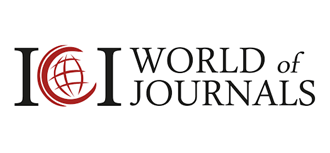- Review Article
- Abstract
- Introduction
- Transthyretin (TTR)
- Therapeutic Options for Cardiac Amyloidosis [11-14]
- Diagnosis of Cardiac Amyloidosis [2-4, 15]
- Clinical Research and Medication used for Transthyretin Cardiac Amyloidosis Outcome
- Future Horizons in Cardiac Amyloidosis Treatment
- Conclusion
- References
Transthyretin Cardiac Amyloidosis: Insights into Wild-Type Variants and Familial Amyloid Cardiomyopathy
Sandeep Bolla*
Department of Statistical Programming, Fortrea, USA
Submission: October 07, 2024;Published: October 18, 2024
*Corresponding author:Sandeep Bolla, Department of Statistical Programming, Fortrea, USA, Email: sandeepbolla@gmail.com
How to cite this article:Sandeep B. ATransthyretin Cardiac Amyloidosis: Insights into Wild-Type Variants and Familial Amyloid Cardiomyopathy. J Cardiol & Cardiovasc Ther 2024; 19(4): 556018. DOI: 10.19080/JOCCT.2024.19.556018
- Review Article
- Abstract
- Introduction
- Transthyretin (TTR)
- Therapeutic Options for Cardiac Amyloidosis [11-14]
- Diagnosis of Cardiac Amyloidosis [2-4, 15]
- Clinical Research and Medication used for Transthyretin Cardiac Amyloidosis Outcome
- Future Horizons in Cardiac Amyloidosis Treatment
- Conclusion
- References
Abstract
Transthyretin (TTR) cardiac amyloidosis is a progressive condition characterized by amyloid fibril deposition in the heart, leading to heart failure. This review focuses on insights into wild-type (ATTRwt) and familial (ATTRm) variants of TTR amyloidosis. The pathophysiology involves TTR tetramer destabilization, monomer misfolding, and amyloid fibril formation. Therapeutic advances, including TTR stabilizers like tafamidis and Diflunisal, and gene-silencing agents such as patisiran and inotersen, show promise in managing the disease. Despite these advancements, early diagnosis remains challenging, and side effects of current therapies necessitate the development of safer, more effective treatments. Future research should focus on novel therapies, improved diagnostic methods, and personalized treatment strategies to enhance patient outcomes. This review underscores the importance of continued innovation and collaboration in tackling TTR cardiac amyloidosis.
Keywords: Transthyretin Amyloidosis; ATTRwt; Familial Amyloid Cardiomyopathy; Tafamidis; Gene-Silencing therapy
Abbreviations: TTR: Transthyretin; ICD: Implantable Cardioverter Defibrillator; LGE: Late Gadolinium Enhancement; NSAID: Non-steroidal Anti-Inflammatory Drug; siRNA: small interfering RNA; hATTR: hereditary ATTR; ATTRwt: wild-type transthyretin; ATTRm mutant transthyretin; NEJM: New England Journal of Medicine; CA: Cardiac Amyloidosis; NT-proBNP: N-terminal Pro-B-Type Natriuretic Peptide
- Review Article
- Abstract
- Introduction
- Transthyretin (TTR)
- Therapeutic Options for Cardiac Amyloidosis [11-14]
- Diagnosis of Cardiac Amyloidosis [2-4, 15]
- Clinical Research and Medication used for Transthyretin Cardiac Amyloidosis Outcome
- Future Horizons in Cardiac Amyloidosis Treatment
- Conclusion
- References
Introduction
Cardiac amyloidosis is a complex condition that involves the buildup of abnormal proteins known as amyloid fibrils in the heart muscle. These deposits disrupt the normal functioning of the heart, leading to a range of cardiovascular complications including progressive heart failure. The disease is categorized under infiltrative cardiomyopathies, which are conditions characterized by the infiltration of substances into the myocardium, affecting its structure and function. Amyloidosis itself is not a single disease but rather a group of disorders that share the common feature of extracellular deposition of insoluble fibrillar proteins in various tissues and organs. The classification of amyloidosis is based on the type of protein precursor involved in the formation of these amyloid fibrils. There are several types of amyloidosis, each associated with a different precursor protein [1-3].
Among the various forms of amyloidosis, Transthyretin (TTR) amyloidosis stands out as particularly prevalent, especially among older adults. Transthyretin is a transport protein normally found in the blood, responsible for carrying thyroid hormones and vitamin A. In TTR amyloidosis, mutations in the TTR gene lead to the production of unstable transthyretin molecules that misfold and aggregate into amyloid fibrils. These fibrils then deposit in various tissues, including the heart, leading to cardiac amyloidosis as shown in (Figure 1) [1-3].
The symptoms of cardiac amyloidosis can vary widely among patients, ranging from mild to severe heart failure symptoms such as shortness of breath, fatigue, and swelling due to fluid retention. The disease progression can be rapid, and without treatment, it can lead to significant morbidity and mortality [1-3]. Diagnosis of cardiac amyloidosis involves a combination of clinical evaluation, imaging studies such as echocardiography and cardiac MRI, and sometimes biopsy to confirm the presence of amyloid deposits. Treatment strategies aim to manage symptoms, slow disease progression, and address the underlying cause of the amyloidosis when possible. This may include medications to stabilize the transthyretin protein, treatments to remove amyloid deposits, and in severe cases, heart transplantation. Given its complexity and the potential for significant impact on quality of life and survival, cardiac amyloidosis requires careful diagnosis and management. Ongoing research continues to explore new diagnostic tools and treatment options to improve outcomes for patients affected by this condition [1-3].

This review aims to provide a comprehensive overview of the impact of TTR variants on cardiac amyloidosis, with a particular focus on the differences between wild-type and familial forms. By synthesizing current research and clinical findings, we seek to enhance understanding of the pathophysiology, diagnosis, and treatment of TTR-related cardiac amyloidosis.
- Review Article
- Abstract
- Introduction
- Transthyretin (TTR)
- Therapeutic Options for Cardiac Amyloidosis [11-14]
- Diagnosis of Cardiac Amyloidosis [2-4, 15]
- Clinical Research and Medication used for Transthyretin Cardiac Amyloidosis Outcome
- Future Horizons in Cardiac Amyloidosis Treatment
- Conclusion
- References
Transthyretin (TTR)
Function of Transthyretin (TTR) in the Body
Transthyretin (TTR), also known as prealbumin, is a plasma
protein synthesized primarily in the liver and choroid plexus of
the brain. Its primary functions in the body are twofold:
i. Transport of Thyroid Hormones: TTR binds to
thyroxine (T4), the major hormone produced by the thyroid gland,
and transports it throughout the bloodstream. This transport
mechanism helps regulate the availability of thyroid hormones to
tissues, playing a crucial role in metabolic processes, growth, and
development [4-7].
ii. Transport of Vitamin A: TTR forms a complex with
retinol-binding protein (RBP), facilitating the transport of vitamin
A (retinol) in the blood. Vitamin A is essential for vision, immune
function, reproduction, and cellular communication. By aiding in
the transport of vitamin A, TTR contributes to maintaining these
vital physiological processes. TTR circulates in the blood as a
tetramer composed of four identical subunits. This quaternary
structure is crucial for its stability and function. Any disruption
in the assembly or stability of the TTR tetramer can lead to
pathological consequences [4-7].
iii. TTR Misfolding Leads to Amyloid Deposition [4-
7]: Misfolding of TTR occurs when genetic mutations or certain
environmental factors destabilize the TTR tetramer, leading to
dissociation into monomers. These monomeric units are prone
to misfolding and aggregating into amyloid fibrils, which are
insoluble and resistant to degradation. The accumulation of these
fibrils in tissues, a process known as amyloidosis, disrupts normal
tissue architecture and function.
The Pathogenesis of TTR Amyloidosis Involves Several Key Steps:
i. Dissociation of TTR Tetramers: Under normal
circumstances, TTR exists as a stable tetramer. Mutations in the
TTR gene or aging-related modifications can reduce the stability
of this tetramer, promoting its dissociation into monomers. This
instability is crucial for the initiation of amyloidosis, as it allows
for the misfolding of TTR proteins.
ii. Misfolding of Monomers or Dimers: Once dissociated,
TTR monomers or dimers are susceptible to misfolding due to
their exposed hydrophobic regions, which favor aggregation
over correct folding. Misfolded TTR proteins can undergo further
unfolding or partial refolding, creating intermediate products that
are prone to aggregation.
iii. Aggregation into Amyloid Fibrils: Misfolded TTR
proteins aggregate into non-native oligomers, which then
assemble into amyloid fibrils. These fibrils are highly ordered,
beta-sheet-rich structures that are characteristic of amyloid
deposits. The formation of amyloid fibrils is facilitated by chemical
shifts under certain conditions that destabilize the TTR protomer,
promoting local unfolding into monomers or dimers.
iv. Tissue Deposition and Organ Dysfunction: Amyloid
fibrils deposit in various tissues, including the heart, nerves, and
kidneys, leading to organ dysfunction. In the heart, for example,
amyloid deposition can cause cardiomyopathy, leading to heart
failure.
The progression from TTR misfolding to amyloid deposition and subsequent organ damage highlights the critical role of protein stability and folding in maintaining health as shown in (Figure 2). Understanding the mechanisms underlying TTR amyloidosis has important implications for developing therapeutic strategies aimed at stabilizing the TTR tetramer, preventing misfolding, or enhancing the clearance of amyloid deposits.

Variants of Transthyretin (TTR) Amyloidosis [2-4, 8,9]
Transthyretin (TTR) amyloidosis encompasses a spectrum of disorders characterized by the deposition of amyloid fibrils composed of TTR protein in various tissues. This condition can be broadly categorized into two main forms based on the origin of the TTR protein involved: wild-type TTR amyloidosis (ATTRwt) and mutant TTR amyloidosis (ATTRm).
Wild-Type TTR Amyloidosis (ATTRwt) [2-4, 8,9]: ATTRwt, also referred to as senile systemic amyloidosis (SSA), is associated with the deposition of wild-type (non-mutated) TTR protein. This form of amyloidosis typically affects older adults, with the average age of onset being around 70 years. The pathogenesis of ATTRwt is believed to involve the inherent instability of the wildtype TTR protein, which over time can lead to its misfolding and aggregation into amyloid fibrils. These deposits can accumulate in various tissues, including the heart, leading to cardiomyopathy and other systemic manifestations. The clinical presentation of ATTRwt is variable but commonly includes symptoms related to cardiac involvement, such as heart failure, and less frequently, neurological symptoms. The prognosis of ATTRwt is generally better than that of ATTRm, with slower progression and later onset of symptoms.
Mutant TTR Amyloidosis (ATTRm): [2-4, 8,9]: ATTRm arises from specific point mutations in the TTR gene, leading to the production of unstable TTR proteins that are prone to misfolding and aggregation. Over 100 different TTR mutations have been identified, each potentially leading to a unique clinical phenotype. ATTRm is typically associated with familial amyloid cardiomyopathy and polyneuropathy, although the exact manifestations can vary depending on the specific mutation involved. Compared to ATTRwt, ATTRm tends to present earlier in life and follows a more aggressive course. Symptoms can include severe cardiac dysfunction, peripheral neuropathy, autonomic nervous system dysfunction, and gastrointestinal disorders. The prognosis for ATTRm is generally poorer than for ATTRwt, with more rapid progression and higher morbidity and mortality rates. Clinical manifestations of cardiac amyloidosis in patients with wild-type TTR (ATTRwt) and mutant TTR (ATTRm) as shown in Table 1. Understanding the distinction between ATTRwt and ATTRm is crucial for accurate diagnosis, prognosis assessment, and treatment planning. While both forms involve TTR protein deposition, the underlying mechanisms, clinical presentations, and prognoses differ significantly. Management strategies may include symptomatic treatments, disease-modifying therapies aimed at stabilizing the TTR protein or reducing its production, and in severe cases, liver transplantation for ATTRm patients, as the liver is the primary site of TTR synthesis [10].

- Review Article
- Abstract
- Introduction
- Transthyretin (TTR)
- Therapeutic Options for Cardiac Amyloidosis [11-14]
- Diagnosis of Cardiac Amyloidosis [2-4, 15]
- Clinical Research and Medication used for Transthyretin Cardiac Amyloidosis Outcome
- Future Horizons in Cardiac Amyloidosis Treatment
- Conclusion
- References
Therapeutic Options for Cardiac Amyloidosis [11-14]
Cardiac amyloidosis, particularly transthyretin (TTR) amyloidosis, requires a multifaceted approach for management and treatment shown in (Figure 2). Below are the key therapeutic options available:
Pharmacologic Treatments
i. Tafamidis: Stabilizes TTR tetramer, preventing
dissociation and subsequent amyloid formation. Approved for
ATTR-CM (cardiomyopathy due to TTR amyloidosis).
ii. Diflunisal: Non-steroidal anti-inflammatory drug
(NSAID) that stabilizes TTR. Used off-label for TTR amyloidosis.
iii. Patisiran: Small interfering RNA (siRNA) that inhibits
TTR production in the liver. Approved for hereditary ATTR
amyloidosis with polyneuropathy (hATTR).
iv. Inotersen: Antisense oligonucleotide that reduces TTR
synthesis. Approved for hATTR with polyneuropathy.
v. Doxycycline and TUDCA (Tauroursodeoxycholic
Acid): Combination therapy aimed at disrupting amyloid
fibrils and promoting their clearance. Investigational for ATTR
amyloidosis.
Non-Pharmacologic Treatments
i. Heart Transplantation: Considered for select patients
with severe heart failure due to cardiac amyloidosis. Limited by
availability of donor hearts and patient eligibility criteria.
ii. Liver Transplantation: Primarily used for hereditary
ATTR amyloidosis, as the liver produces mutant TTR. Helps to
reduce the source of mutant TTR production.
Supportive Treatments
i. Heart Failure Management: Diuretics, beta-blockers,
ACE inhibitors/ARBs, and aldosterone antagonists. Tailored to
manage symptoms of heart failure and maintain cardiac function.
ii. Pacemaker or Implantable Cardioverter
Defibrillator (ICD): For patients with arrhythmias or conduction
system disease. Helps to manage rhythm abnormalities and
prevent sudden cardiac death.
iii. Lifestyle Modifications: Low-salt diet, regular physical
activity, and avoiding alcohol and smoking. Supports overall
cardiovascular health and symptom management.
Emerging Therapies and Clinical Trials
i. Gene Editing (CRISPR/Cas9): Mechanism: Potential to
correct TTR gene mutations.
ii. Monoclonal Antibodies: Target and promote clearance
of amyloid fibrils.
- Review Article
- Abstract
- Introduction
- Transthyretin (TTR)
- Therapeutic Options for Cardiac Amyloidosis [11-14]
- Diagnosis of Cardiac Amyloidosis [2-4, 15]
- Clinical Research and Medication used for Transthyretin Cardiac Amyloidosis Outcome
- Future Horizons in Cardiac Amyloidosis Treatment
- Conclusion
- References
Diagnosis of Cardiac Amyloidosis [2-4, 15]
The diagnosis of cardiac amyloidosis, particularly distinguishing between wild-type transthyretin (ATTRwt) and mutant transthyretin (ATTRm) forms, requires a comprehensive approach involving clinical evaluation, imaging studies, biomarker analysis, and, in some cases, biopsy.
Biopsy
Endomyocardial Biopsy: Remains the gold standard for confirming the presence of amyloid deposits within the heart tissue. Although invasive, it provides definitive evidence of amyloidosis and can differentiate between types of amyloid (e.g., ATTRwt vs. ATTRm) through immunohistochemical staining.
Imaging
i. Echocardiography: Useful for detecting thickening of the ventricular walls and signs of diastolic dysfunction, which are common in cardiac amyloidosis. It can also assess the size and function of the heart [15-17]. ii. Cardiac MRI: Offers superior visualization of cardiac anatomy and function. Late gadolinium enhancement (LGE) patterns are indicative of amyloid infiltration, especially in the myocardium.
Biomarkers
i. Serum and Urine Immunoelectrophoresis: Detects
monoclonal gammopathies, which are associated with AL
amyloidosis, another type of amyloidosis that can mimic ATTR.
This test is not specific to ATTR but is part of the broader
diagnostic workup.
ii. N-terminal Pro-B-Type Natriuretic Peptide (NTproBNP)
and Troponin Levels: Elevated levels of these markers
indicate cardiac strain and can support the diagnosis of cardiac
involvement in amyloidosis.
- Review Article
- Abstract
- Introduction
- Transthyretin (TTR)
- Therapeutic Options for Cardiac Amyloidosis [11-14]
- Diagnosis of Cardiac Amyloidosis [2-4, 15]
- Clinical Research and Medication used for Transthyretin Cardiac Amyloidosis Outcome
- Future Horizons in Cardiac Amyloidosis Treatment
- Conclusion
- References
Clinical Research and Medication used for Transthyretin Cardiac Amyloidosis Outcome
Patisiran Treatment in Patients with Transthyretin Cardiac Amyloidosis
The study published in the New England Journal of Medicine (NEJM) titled “Patisiran Treatment in Patients with Transthyretin Cardiac Amyloidosis” presents groundbreaking findings on the efficacy and safety of patisiran in treating transthyretin cardiac amyloidosis (ATTR-CM). This condition, characterized by the accumulation of misfolded transthyretin protein in the heart, leads to significant morbidity and mortality. The study underscores the critical need for effective treatments that can slow disease progression and improve patient outcomes. Patisiran, an antisense oligonucleotide designed to inhibit the production of wild-type and variant transthyretin proteins, has shown promising results in early clinical trials. Proposed mechanism of action of Patisiran in patients with transthyretin cardiac amyloidosis shown in (Figure 3). The NEJM study extends these findings by demonstrating that patisiran treatment significantly reduces serum levels of both wild-type and variant transthyretin proteins, leading to improvements in cardiac structure and function. Importantly, the study also reports a favorable safety profile, with no new safety concerns identified during the trial period. These results are particularly significant given the limited treatment options available for ATTR-CM. Traditional therapies, such as diuretics and antiarrhythmics, primarily address symptomatic relief rather than the underlying disease process.
In contrast, patisiran targets the root cause of ATTR-CM by reducing the production of transthyretin proteins, potentially offering a more durable benefit for patients. Furthermore, the study highlights the potential of targeted therapies like patisiran to transform the management of ATTR-CM. By addressing the genetic basis of the disease, these treatments could alter the natural history of the condition and improve long-term outcomes for affected individuals. In conclusion, the NEJM study on patisiran treatment in patients with transthyretin cardiac amyloidosis marks a pivotal moment in the field. It not only validates the efficacy and safety of patisiran but also opens up new avenues for personalized medicine in the treatment of ATTR-CM. As such, it sets the stage for further research and clinical adoption of this transformative therapy, ultimately benefiting patients suffering from this debilitating condition [18].
Tafamidis Treatment for Patients with Transthyretin Amyloid Cardiomyopathy
The landmark study published in the New England Journal of Medicine (NEJM) titled “Tafamidis Treatment for Patients with Transthyretin Amyloid Cardiomyopathy” presents compelling evidence supporting the efficacy and safety of tafamidis in treating transthyretin amyloid cardiomyopathy (ATTR-CM). This condition, characterized by the accumulation of misfolded transthyretin (TTR) proteins in the heart, leads to significant morbidity and mortality among affected individuals. The study’s findings underscore the critical need for effective treatments that can slow disease progression and improve patient outcomes. Tafamidis, a medication designed to stabilize the TTR tetramer and prevent its misfolding and aggregation, has shown remarkable results in clinical trials. The NEJM study demonstrates that tafamidis treatment significantly slows the progression of ATTR-CM, as evidenced by improvements in cardiac structure and function, and reductions in NT-proBNP levels-a marker of cardiac stress. Importantly, the study also reports a favorable safety profile, with no new safety concerns identified during the trial period. These results are particularly significant given the limited treatment options available for ATTR-CM.

Traditional therapies, such as diuretics and antiarrhythmics, primarily address symptomatic relief rather than the underlying disease process. In contrast, tafamidis targets the root cause of ATTR-CM by stabilizing the TTR tetramer, potentially offering a more durable benefit for patients. Furthermore, the study highlights the potential of targeted therapies like tafamidis to transform the management of ATTR-CM. Proposed mechanism of action of tafamidis in patients with transthyretin cardiac amyloidosis shown in Figure 4. By addressing the genetic basis of the disease, these treatments could alter the natural history of the condition and improve long-term outcomes for affected individuals. In conclusion, the NEJM study on tafamidis treatment in patients with transthyretin amyloid cardiomyopathy marks a pivotal moment in the field. It not only validates the efficacy and safety of tafamidis but also opens up new avenues for personalized medicine in the treatment of ATTR-CM. As such, it sets the stage for further research and clinical adoption of this transformative therapy, ultimately benefiting patients suffering from this debilitating condition [2, 19].
- Review Article
- Abstract
- Introduction
- Transthyretin (TTR)
- Therapeutic Options for Cardiac Amyloidosis [11-14]
- Diagnosis of Cardiac Amyloidosis [2-4, 15]
- Clinical Research and Medication used for Transthyretin Cardiac Amyloidosis Outcome
- Future Horizons in Cardiac Amyloidosis Treatment
- Conclusion
- References
Future Horizons in Cardiac Amyloidosis Treatment
Cardiac amyloidosis (CA) is a complex and challenging condition characterized by the extracellular deposition of misfolded proteins, leading to organ dysfunction. Two predominant subtypes, Transthyretin amyloid (ATTR) and immunoglobulin light chain amyloid, account for the majority of clinical cases. The treatment landscape for CA has evolved significantly, with over 100 ongoing clinical trials reflecting the urgent need for advanced therapeutic interventions. This review explores the current standard-of-care and the future prospects in CA therapy, emphasizing the rapid evolution of therapeutic options.

Current Therapies
i. Tafamidis: Approved as the first ATTR-stabilizer,
tafamidis has gained widespread clinical use. It acts by stabilizing
the TTR tetramer, preventing its misfolding and aggregation, and
thereby reducing amyloid deposition.
ii. Supportive Care: Management of comorbidities,
including atrial fibrillation and valvular disease, remains a
critical aspect of CA treatment. However, the management of
these conditions is complicated by the technical challenges and
uncertain outcomes associated with CA.
Future Therapeutic Classes
i. Silencers: These are a class of drugs designed to silence
the genes responsible for producing amyloidogenic proteins. They
represent a promising avenue for reducing amyloid production at
its source.
ii. Antibodies: Antibodies targeting amyloid fibrils or the
misfolded proteins themselves are under investigation. These
could potentially accelerate the clearance of amyloid deposits
from affected tissues.
iii. Genetic Therapy: Advances in gene editing technologies,
such as CRISPR-Cas9, open up possibilities for correcting the
genetic defects underlying ATTR and other forms of amyloidosis
at the molecular level.
Challenges and Opportunities
i. Personalized Medicine: The heterogeneity of CA, with
its various subtypes and presentations, underscores the need
for personalized treatment strategies. Genetic testing and the
identification of specific risk alleles will become increasingly
important in tailoring therapies to individual patients.
ii. Comprehensive Multidisciplinary Care: The
management of CA requires a multidisciplinary approach,
encompassing cardiology, hematology, and neurology, among
others. Future care models should emphasize close collaboration
among specialists to optimize patient outcomes.
- Review Article
- Abstract
- Introduction
- Transthyretin (TTR)
- Therapeutic Options for Cardiac Amyloidosis [11-14]
- Diagnosis of Cardiac Amyloidosis [2-4, 15]
- Clinical Research and Medication used for Transthyretin Cardiac Amyloidosis Outcome
- Future Horizons in Cardiac Amyloidosis Treatment
- Conclusion
- References
Conclusion
This review has explored the pathophysiology, clinical presentation, and therapeutic strategies for transthyretin (TTR) cardiac amyloidosis, emphasizing both wild-type (ATTRwt) and familial (ATTRm) variants. Key studies highlight the effectiveness of stabilizing agents like tafamidis and Diflunisal, as well as genesilencing therapies such as patisiran and inotersen. Despite these advances, challenges remain, including early diagnosis and longterm management. Future horizons include the development of more effective therapies with fewer side effects, such as CRISPR/ Cas9 gene editing and monoclonal antibodies targeting amyloid fibrils. Improved diagnostic techniques, including genetic screening and novel biomarkers, are essential for early detection and timely intervention. Additionally, comparative studies are needed to establish the relative efficacy of current treatments and guide personalized therapeutic approaches. In summary, while significant progress has been made in understanding and managing TTR cardiac amyloidosis, ongoing research and innovation are critical to overcoming existing limitations and improving patient outcomes. Collaborative efforts across research institutions and clinical settings will be pivotal in achieving these goals.
- Review Article
- Abstract
- Introduction
- Transthyretin (TTR)
- Therapeutic Options for Cardiac Amyloidosis [11-14]
- Diagnosis of Cardiac Amyloidosis [2-4, 15]
- Clinical Research and Medication used for Transthyretin Cardiac Amyloidosis Outcome
- Future Horizons in Cardiac Amyloidosis Treatment
- Conclusion
- References
References
- Falk RH, Alexander KM, Liao R, Dorbala S (2016) AL (Light-Chain) Cardiac Amyloidosis: A Review of Diagnosis and Therapy. J Am Coll Cardiol 68(12): 132-140.
- Maurer MS, Schwartz JH, Gundapaneni B, Perry EM, Giampaola M, et al. (2018) Tafamidis Treatment for Patients with Transthyretin Amyloid Cardiomyopathy. N Engl J Med 379(11): 1007-1016.
- Rapezzi C, Quarta CC, Riva L, Simone L, Ilaria G, et al. (2010) Transthyretin-related amyloidoses and the heart: a clinical overview. Nat Rev Cardiol 7(7): 398-408.
- Ando Y, Coelho T, Berk JL, Márcia Waddington C, Bo-Göran E, et al. (2013) Guideline of transthyretin-related hereditary amyloidosis for clinicians. Orphanet J Rare Dis 8: 31.
- Benson MD, Kincaid JC (2007) The molecular biology and clinical features of amyloid neuropathy. Muscle Nerve 36(4): 411-423.
- Saraiva MJ (2001) Transthyretin mutations in hyperthyroxinemia and amyloid diseases. Hum Mutat 17(6): 493-503.
- Westermark P, Sletten K, Johansson B, Cornwell GG III (1990) Fibril in senile systemic amyloidosis is derived from normal transthyretin. Proc Natl Acad Sci USA 87(7): 2843-2845.
- Sekijima Y, Dendle MA, Kelly JW (2006) Orally administered diflunisal stabilizes transthyretin against dissociation required for amyloidogenesis. Amyloid 13(4): 236-249.
- Gonzalez-Duarte A, Ulloa-Aguirre A (2021) A Brief Journey through Protein Misfolding in Transthyretin Amyloidosis (ATTR Amyloidosis). Int J Mol Sci 22(23): 13158.
- Maurer MS, Hanna M, Grogan M, Angela D, Ronald W, et al. (2016) Genotype and Phenotype of Transthyretin Cardiac Amyloidosis: THAOS (Transthyretin Amyloid Outcome Survey). J Am Coll Cardiol 68(2): 161-172.
- Shams P, Ahmed I (2022) Cardiac Amyloidosis. PubMed. Treasure Island (FL): StatPearls Publishing.
- Marianna Fontana, Vincent Rajkuma S, William McKenna J, Todd F Dardas (2024) Cardiac Amyloidosis Treatment and Prognosis.
- Cardiac amyloidosis - Treatment options. Mayo Clinic.
- ATTR Amyloidosis (Amyloid Transthyretin) (2017) Cleveland Clinic.
- Brownrigg J, Lorenzini M, Lumley M, Elliott P (2019) Diagnostic performance of imaging investigations in detecting and differentiating cardiac amyloidosis: a systematic review and meta-analysis. ESC Heart Fail 6: 1041-1051.
- Chamling B, Bietenbeck M, Korthals D, Drakos S, Vehof V, et al. (2023) Therapeutic value of tafamidis in patients with wild-type transthyretin amyloidosis (ATTRwt) with cardiomyopathy based on cardiovascular magnetic resonance (CMR) imaging. Clin Res Cardiol 112: 353-362.
- Knight DS, Zumbo G, Barcella W, Steeden JA, Muthurangu V, et al. (2019) Cardiac Structural and Functional Consequences of Amyloid Deposition by Cardiac Magnetic Resonance and Echocardiography and Their Prognostic Roles. JACC Cardiovasc Imaging 12(5): 823-833.
- Maurer MS, Kale P, Fontana M, Berk JL, Grogan M, et al. (2023) Patisiran Treatment in Patients with Transthyretin Cardiac Amyloidosis. New England J Med 389(17): 1553-1565.
- Chamling B, Bietenbeck M, Korthals D, Drakos S, Vehof V, et al. (2023) Therapeutic value of tafamidis in patients with wild-type transthyretin amyloidosis (ATTRwt) with cardiomyopathy based on cardiovascular magnetic resonance (CMR) imaging. Clin Res Cardiol 112(3): 353-362.






























